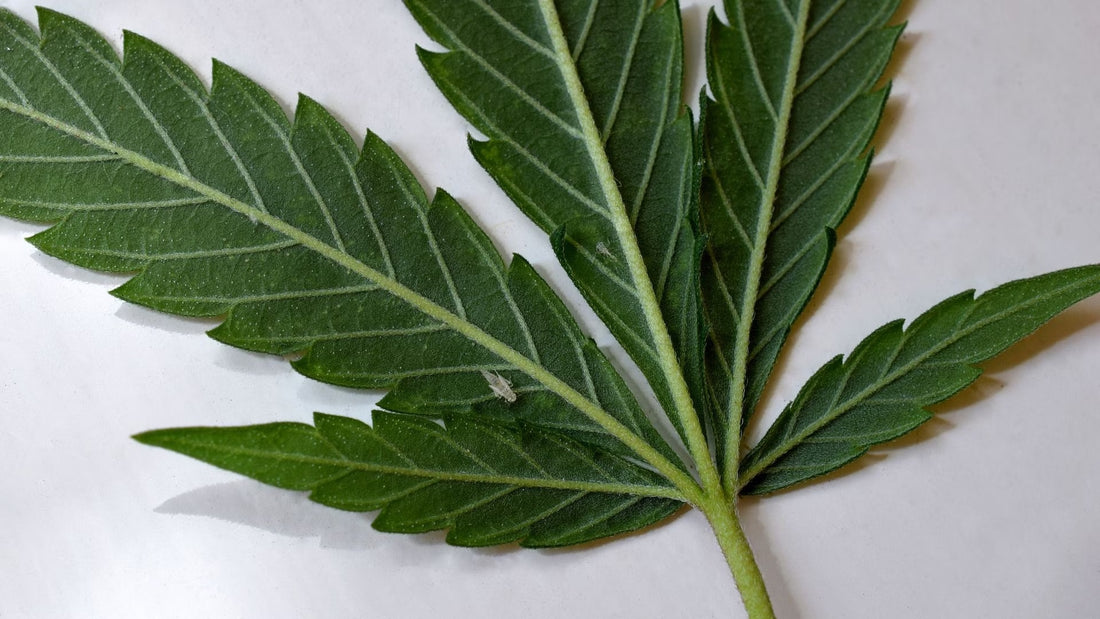
Help, I've Got Aphids!
Share
Aphids, those tiny but formidable plant pests, have a knack for causing havoc among gardeners and cannabis cultivators. However, fear not, as this article is here to lend a helping hand.
In the following pages, we will unveil an integrated pest management plan that equips you with the knowledge and strategies to combat these bothersome aphids effectively.
From cultural practices that create a balanced ecosystem to employing biological control and carefully regulated chemical intervention, this comprehensive guide will empower you to protect your garden from the relentless invasion of aphids, ensuring the flourishing growth of your green haven. So, let's dive in and bid farewell to these tiny leaf-sucking intruders once and for all!
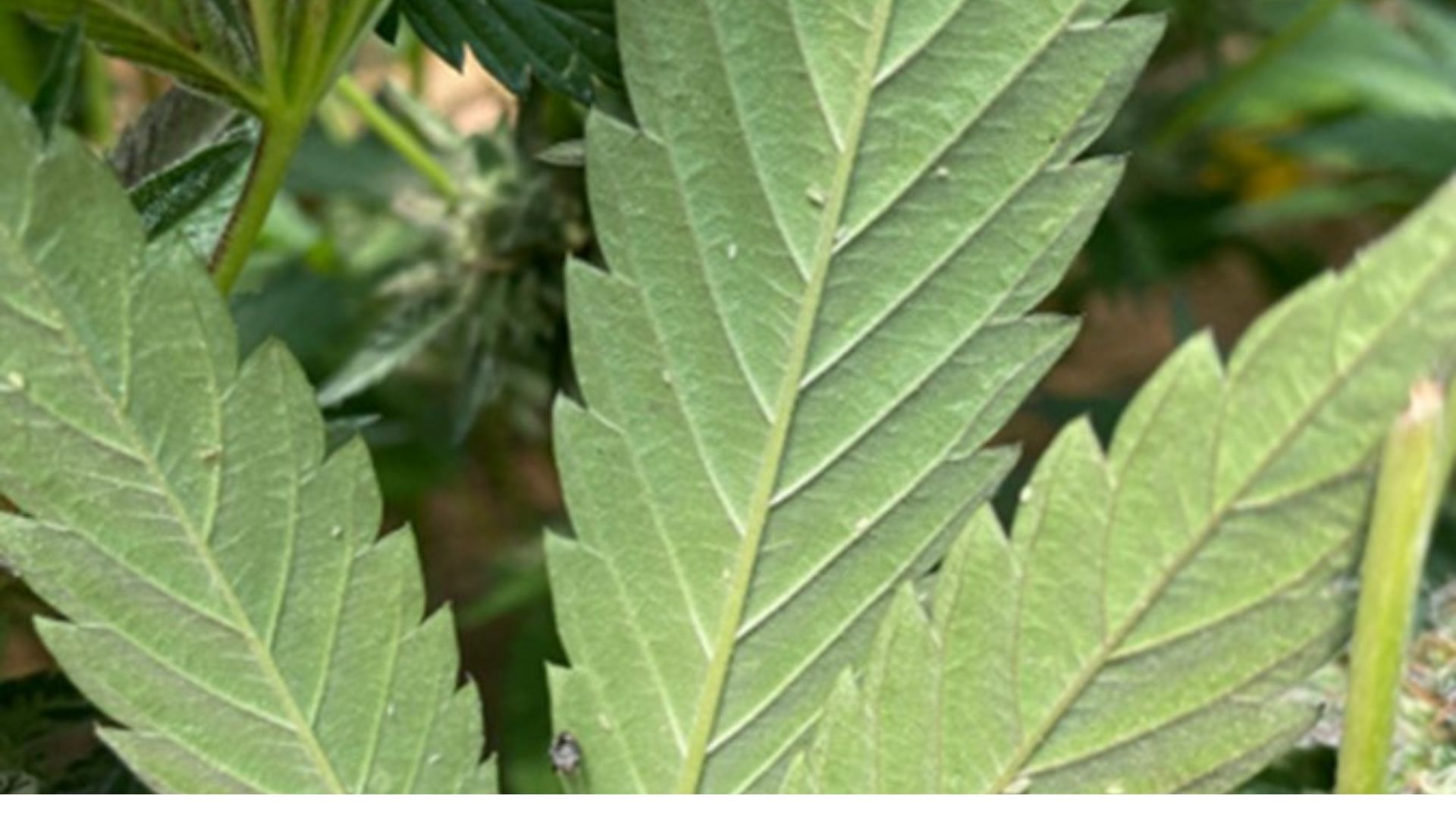
Unveiling The Menace Of Cannabis Aphids
The cannabis aphid, scientifically known as Phorodon cannabis, has been wreaking havoc on cannabis cultivation sites in North America since its first sighting in Oregon in 2016. It has spread its wings and infiltrated cannabis gardens across the United States, proving to be a persistent pest indoors and outdoors. Armed with piercing-sucking mouthparts, these tiny insects feed on the plant fluids within the phloem, and though they may not cause significant damage to the cannabis plant itself, they pose a threat to the quality of the final product.
Distinguishing the cannabis aphid from other species is crucial for effective pest management. By monitoring which plants the aphids are found on, one can quickly identify whether they target cannabis. If the aphids are present on the cannabis plant, typically on the stem or underside of leaves, they are most likely the cannabis aphids. In such cases, acting immediately to prevent further infestation is essential.
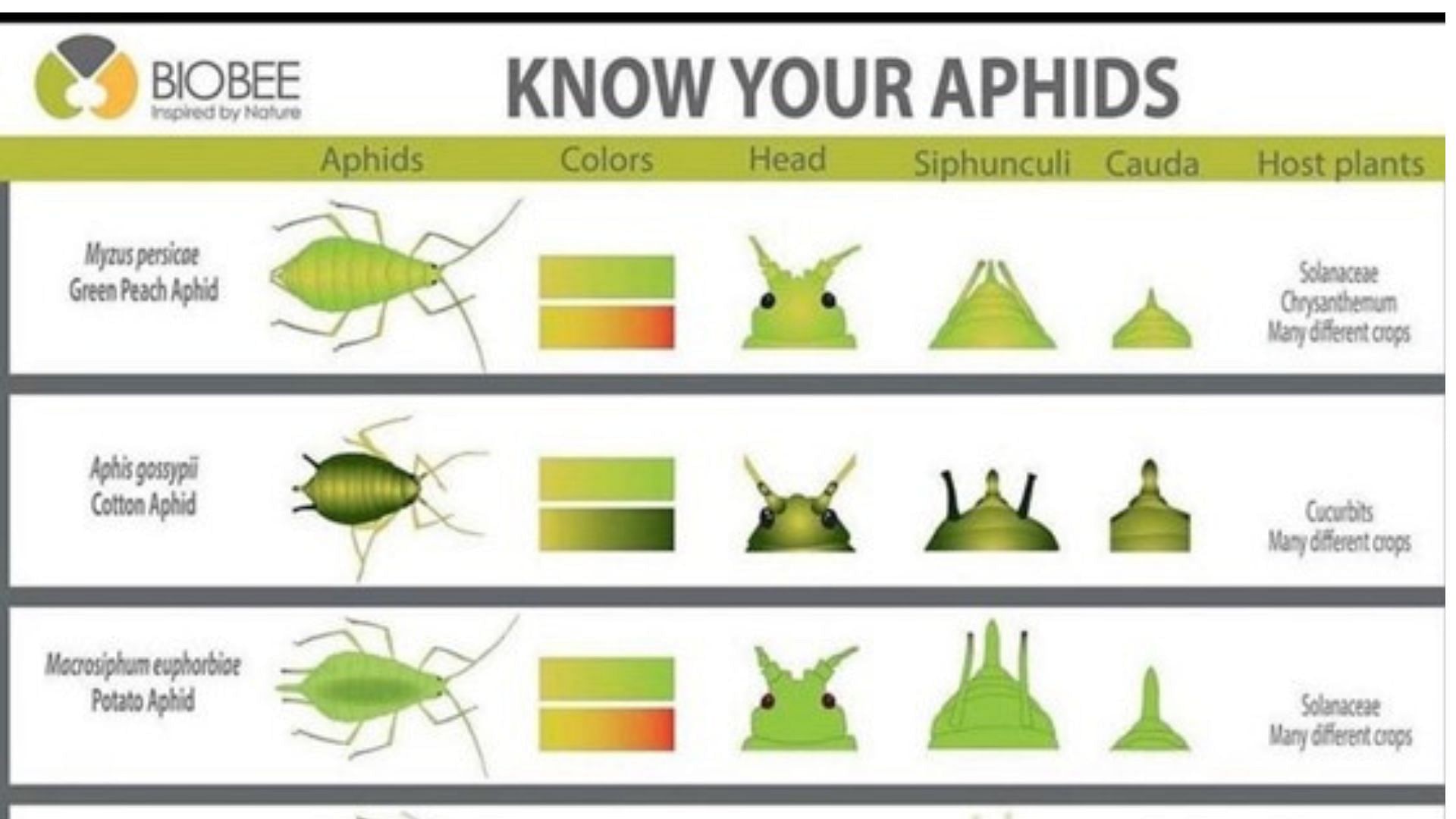
Integrated Pest Management
The key to managing the cannabis aphid lies in adopting a multi-faceted approach that combines cultural, biological, and chemical controls.
Moreover, taking certain cultural precautions can aid in reducing the risk of aphid infestation. Ensuring that guests, and even gardeners themselves, adhere to proper hygiene protocols before entering the garden can help prevent the accidental transfer of aphids from one plant to another. After all, these persistent aphids reproduce asexually, with females capable of giving birth to 4-12 live young each day and laying eggs that overwinter and hatch when the weather warms.
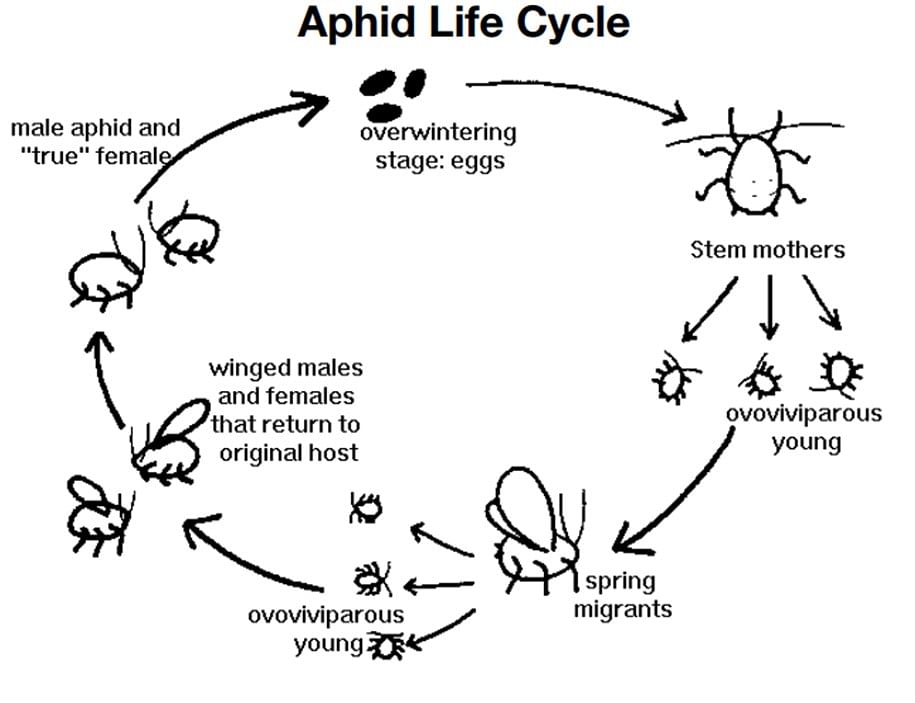
Employing preventative measures is also crucial to combat the cannabis aphid. Foliar applications of horticultural oils products like Monterey or Suffoil-X, combined with Silica such as Silica Earth and a surfactant like yucca, can help deter various pests, including aphids. Integrating these practices into a routine pest management plan can significantly reduce the likelihood of aphid infestations.
After years of cultivating different strains, I have found that aphids prefer the sweet-smelling strains over the gassy ones, like Sour Diesel. Growing varieties pests dislike is a choice any gardener can make to prevent their overall pest pressure. However, even with the best preventative measures, aphids may still enter the garden.
Surprisingly, ants can play a role in introducing aphids to the cannabis plants. They farm aphids, feeding on the honeydew excreted by these tiny insects. To tackle the aphids effectively, it's crucial first to eliminate the ants. Creating a physical barrier around individual plants or beds using coarse ground diatomaceous earth can help keep ants at bay. Additionally, homemade traps containing boric acid (borax), sugar, and water or store-bought ant traps can be strategically placed to lure and eliminate ants.
Homemade Boric Acid Ant Traps Recipe
Boric acid ant traps are a simple and effective way to eliminate ants from your home and garden. These traps use a combination of boric acid and sugar to lure the ants. Once they carry the mixture back to their colony, it works as a potent poison, ultimately eradicating the entire ant population. Here's a quick and easy recipe to create your boric acid ant traps:
Ingredients:
- 1/2 cup of granulated sugar
- 1 1/2 tablespoons of boric acid powder
- 1 cup of warm water
- Cotton balls or small pieces of cardboard
Instructions:
1. Combine the granulated sugar and boric acid powder in a mixing bowl. Mix thoroughly until the two ingredients are evenly distributed.
2. Slowly add warm water to the sugar and boric acid mixture. Stir continuously until you get a smooth and consistent paste-like texture.
3. Soak cotton balls in the boric acid solution, ensuring they are fully saturated. Alternatively, you can use small pieces of cardboard, such as those cut from a cereal box or index cards, as bait holders.
4. Place the soaked cotton balls or cardboard pieces in areas where you have seen ant activity. Focus on ant trails, entry points, and other places frequented by ants.
5. Ensure the ant traps are out of reach of children and pets. Place them strategically along windowsills, near baseboards, and wherever ants are likely to travel.
6. Allow the traps to remain undisturbed for at least 24 to 48 hours. During this time, the ants will return the boric acid bait to their colony, effectively poisoning the entire ant population.
7. Repeat the process as necessary, especially if you notice a resurgence of ant activity. Refresh the boric acid solution every few days to keep the traps effective.
Boric acid is toxic, so it's crucial to handle it carefully and keep the ant traps away from kids, pets, and food preparation areas. With this homemade boric acid ant trap recipe, you can bid farewell to those pesky ants and reclaim your home and garden from these unwanted intruders.
Eradicating aphids becomes the next mission once the ant population is under control. Heavy defoliation can help remove infested biomass, and disposing of these leaves away from cannabis plants can help break the aphid's life cycle. Feeding infested leaves to your chickens or ducks adds a protein-rich treat packed with Omega fatty acids. Physically killing aphids by gently rubbing them off the stems with fingers reduces their numbers.
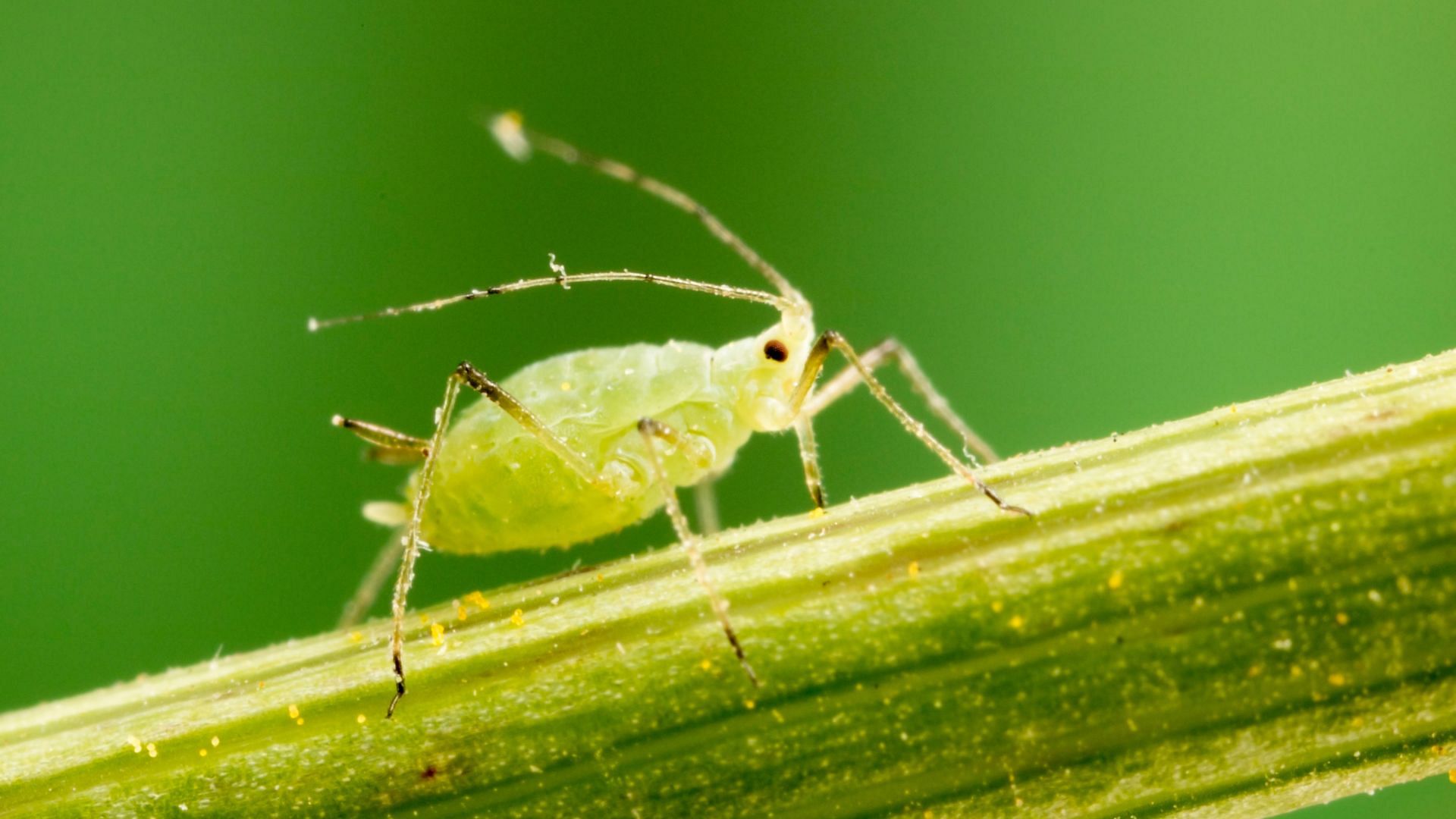
For an integrated approach, a foliar combination of isopropyl alcohol and water can dehydrate and quickly kill the soft-bodied aphids. This method can be complemented with soapy water, which suffocates the aphids, leading to their demise. Soapy water and isopropyl alcohol are versatile and practical tools to combat pests throughout all stages of cannabis growth. They target soft-bodied insects like aphids and spider mites without harming the plant. These treatments help prevent infestations while ensuring the health of your cannabis crop. During the flowering phase of growth, test on a small portion of the plant first, as some strains may be more sensitive to these remedies.
Additionally, Azadirachtin-based (Neem) products like Neemix 4.5 or Molt-X, which target the moulting and reproduction process of aphids, can effectively regulate aphid populations. When using Neem, a potent insecticide derived from the neem tree, it's essential to be mindful of its application timing in cannabis cultivation. Neem is best utilized during the vegetative stage of the cannabis plant and should not be used during the flowering stage. This restriction is due to the potential impact on the final product's flavour and aroma.
Neem has a distinct taste and odour that can be absorbed by the cannabis plant if applied during the flowering phase. As a result, the flowers may retain an undesirable, bitter flavour and aroma that can significantly diminish the overall quality of the harvest. To avoid ruining your flower’s flavour, it's crucial to restrict Neem usage to the vegetative stage when there are no buds present. By employing Neem carefully in the vegetative stage and switching to other suitable pest management options, like biological controls, during flowering, cannabis growers can safeguard the plant's aromatic allure and ultimately yield a more enjoyable and refined product.
Biological Controls
To unleash biological warfare against the cannabis aphids, one can turn to naturally occurring zombie fungi, like Isaria fumosorosea. Brands like Ancora and PFR-70 offer products containing this fungus, which can be applied every 3-5 days to combat aphids effectively. Being a living fungus, they require proper conditions to multiply and work effectively on targeted pests.
To harness the power of these zombie like fungus, freely, you can make a unique Korean Natural Farming (KNF) preparation known as IPMO, Integrated Pest Management Organisms. This approach attracts native fungi that decompose insects by cooking rice, insect frass, and humic acid together and then leaving them in a collection box in the forest. After 4-7 days you should have a fungal bloom filled with native species that will kill insect pests such as aphids.
Check out this class with Chris Trump to learn more about IPMO and other KNF preparations.
It's essential to continue with preventive measures, essential oil, and soapy water applications in between using fungus-based products. Consistency is vital to breaking the aphid life cycle and eradicating the ant population simultaneously. Remember, aphids reproduce at an alarming rate, and swift and consistent action is necessary to prevent a population explosion that could seriously damage the quality of the cannabis crop.
Predatory Insects
Fortunately, there are plenty of predatory insects that will make a quick snack of aphids. Creating a diverse ecosystem around the cannabis garden can attract various insects, forming a natural balance that keeps pests in check. By planting different species of plants, beneficial insects can be lured in, which will feast on aphids and help control their population.
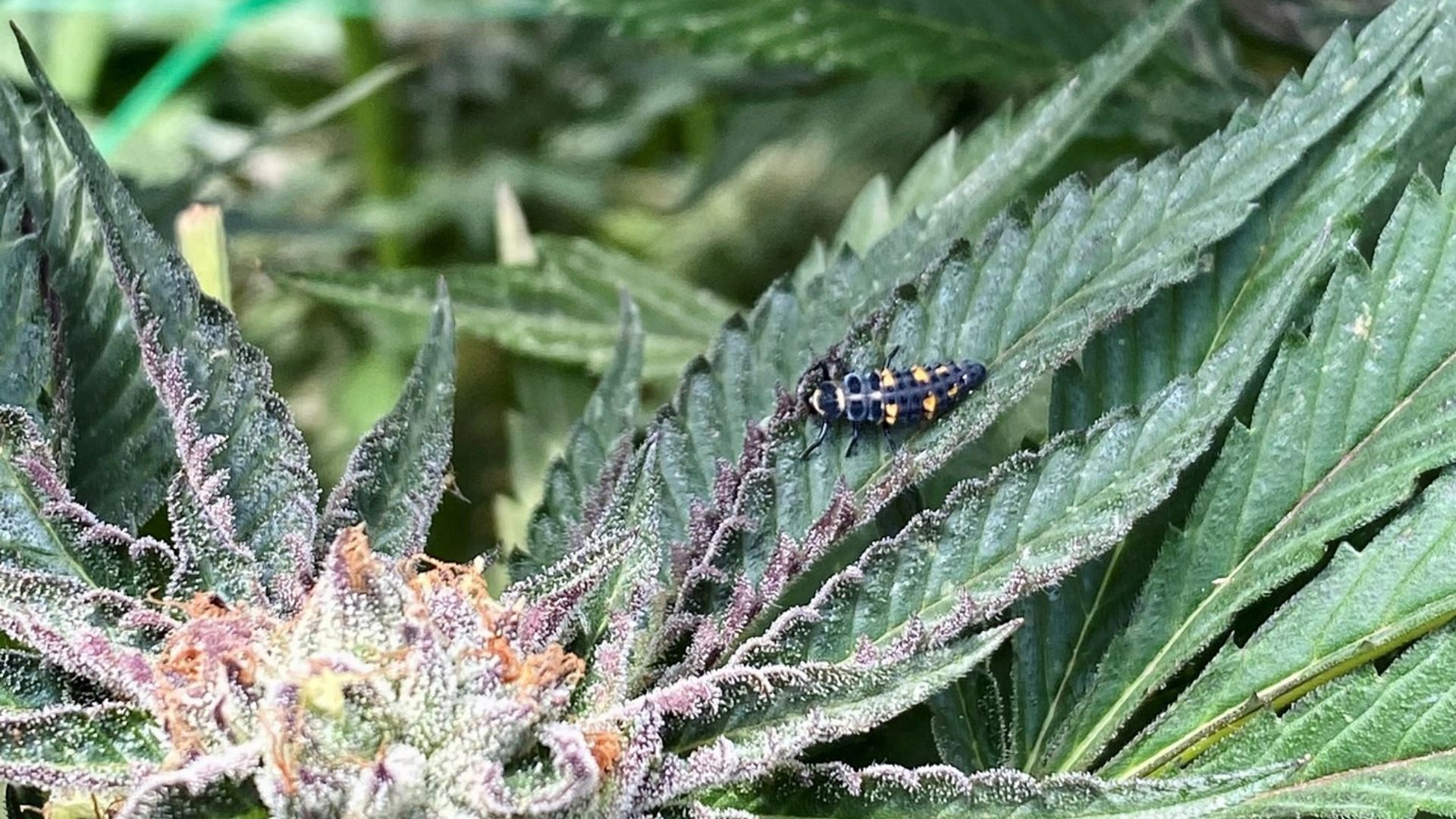
Among these formidable allies are green lacewings, ladybug larvae, and parasitic wasps. Green lacewings, with their delicate, lacy wings, are voracious predators of aphids. Their larvae, commonly known as "aphid lions," have an insatiable appetite for aphids, consuming them at an astonishing rate.
Ladybug larvae, with their spiky appearance, may seem fierce, but they are formidable allies in the fight against aphids. These voracious hunters can devour hundreds of aphids in their larval stage, making them an excellent natural pest control option.
Parasitic wasps, such as the tiny and unassuming Aphidius species, are specialized in targeting aphids. These wasps lay their eggs inside aphids, and as the larvae develop, they feed on the aphids from within, ultimately leading to their demise.
These beneficial insects play a crucial role in maintaining the balance of ecosystems and are invaluable assets in organic pest management strategies, offering a sustainable and environmentally friendly solution to controlling aphid populations in gardens and agricultural settings.
Planting a variety of flowers to attract these insects naturally, buckwheat, daikon radish, and sweet alyssum are among a few. Besides attracting beneficial insects these plants will also improve your soil structure and attract diversity in microorganisms that can help aid in nutrient availability within your soil.
Chemical Controls
In dire cases where aphid infestations have spiralled out of control, organic pyrethrin-based pesticides like Pyganic can only be used in the vegetative phase. However, caution must be exercised as these substances can remain in plant tissue for an extended period and can adversely affect pollinators and aquatic life. Responsible usage is vital, even with organic pesticides.
Conclusion
By adopting an integrative pest management plan that encompasses cultural practices, biological control, and carefully regulated chemical intervention, gardeners can effectively protect their crops from the menace of the cannabis aphid. Through these sustainable and conscious efforts, they can ensure the production of high-quality medicinal herbs for the benefit of themselves and their communities

